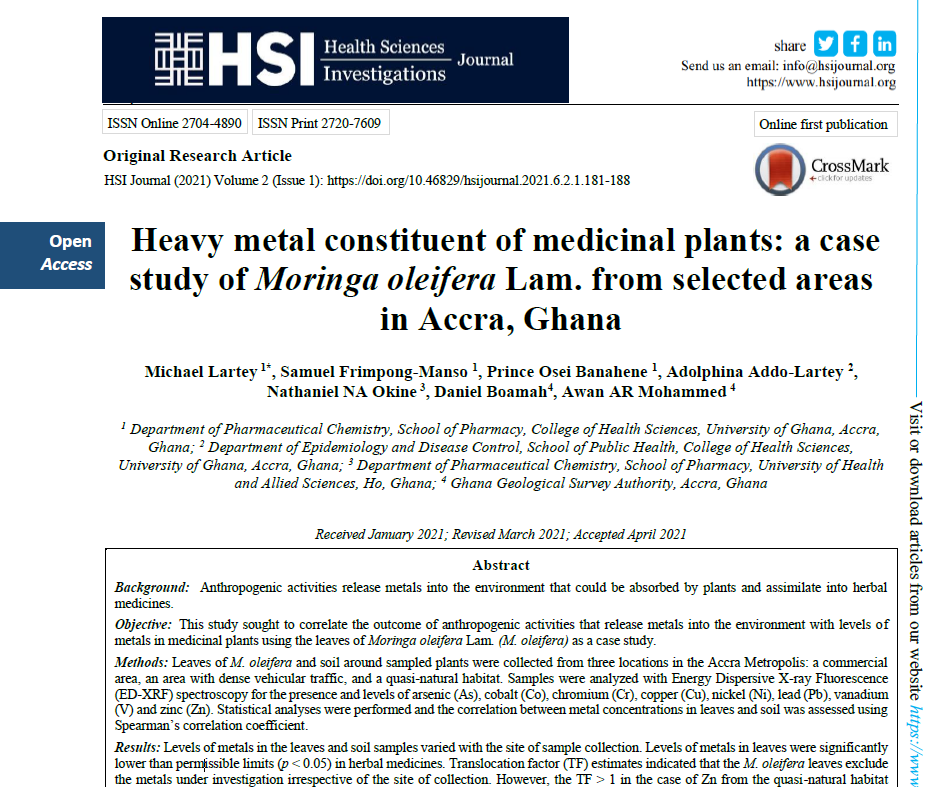Heavy metal constituent of medicinal plants: a case study of Moringa oleifera Lam. from selected areas s compromise the quality of medicinal plants? A case study of Moringa oleifera Lam. from some selected areas in the Accra, Ghana.
Abstract
Background: Anthropological activities release metals into the environment and could be absorbed by plants and assimilate into herbal medicines.
Objective: This study seeks to correlate the outcome of anthropogenic activities that release metals into the environment with levels of metals in herbal plants using the leaves of Moringa oleifera (M. oleifera) as a case study.
Method: Leaves of M. oleifera Lam. and soil around sampled plants were collected from three locations in the Accra Metropolis: a commercial, densely vehicular traffic area, and a quasi-natural habitat. Samples were analyzed with Energy Dispersive X-ray Fluorescence (ED-XRF) spectroscopy for the presence and levels of arsenic (As), cobalt (Co), chromium (Cr), copper (Cu), nickel (Ni), lead (Pb), vanadium (V) and zinc (Zn). Statistical analyses were performed and the correlation between metal concentrations in leaves and soil was assessed using Spearman’s correlation coefficient.
Results: Leaves and soil samples contain varying amounts of the metals. Levels of metals in leaves were significantly lower than permissible limits (p < 0.05). Translocation factor (TF) estimates, indicated that the M. oleifera leaves exclude metals. However, the TF > 1 in the case of Zn from the quasi-natural habitat signifying bioaccumulation in the leaves. Except for Co, the total concentration of each metal in the soil was not correlated to its concentration in the leaves. However significant correlations were observed between concentrations of some metals in the leaves and also in the soil.
Conclusions: The concentration of sampled metals in the leaves and soil are affected by the site of sampling and the anthropogenic activities that release metals into the environment.


